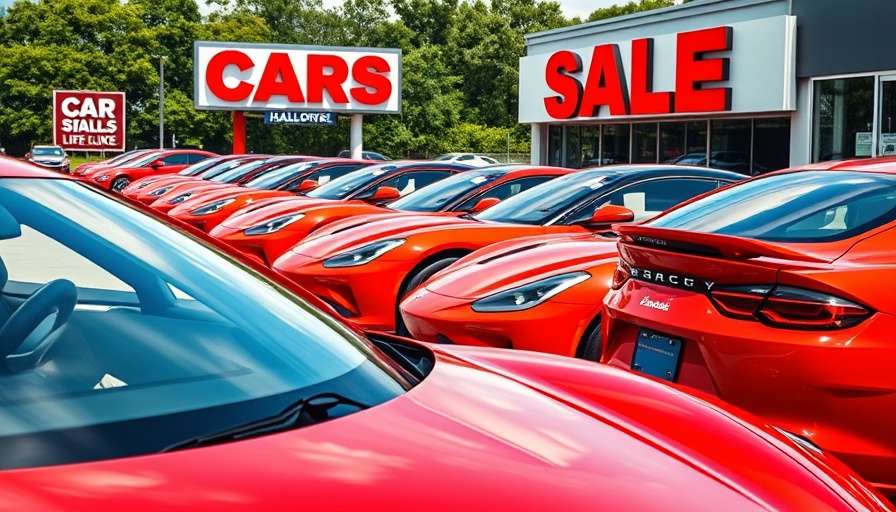
Understanding Recent Trends in Used Vehicle Prices
Used vehicle prices have recently shown signs of easing, with notable shifts occurring in the marketplace due to consumer behavior influenced by economic conditions. In April, prices reached a significant peak, largely driven by fear of impending tariffs announced by the Trump administration. As a response, many consumers accelerated their purchasing decisions in anticipation of higher prices, leading to a buying frenzy that temporarily inflated values.
Market Analysis: The Role of the Manheim Index
The Cox Automotive's Manheim Used Vehicle Value Index serves as an essential indicator in assessing the health of the used vehicle market. Recently, it recorded a decrease of 1.5% from April to May 2025. Despite this reduction, prices remain approximately 4% higher than the same time last year. This dichotomy—rising year-over-year prices amidst a month-to-month decline—suggests a fascinating dynamic at play.
Price Behaviors: Wholesale vs. Retail Dynamics
Typically, retail prices for consumers align with wholesale prices. However, in the current landscape, retail price adjustments have lagged behind wholesale decreases significantly. This disconnect is not just about numbers; it reflects broader market conditions. Even as wholesale prices decreased, consumers continue to encounter high retail prices. Factor in the ongoing demand for used vehicles, and it's clear why buyers might feel frustrated navigating the auto market.
Tariffs and Their Impact on Consumer Decisions
President Trump's auto tariffs, a considerable concern for the new vehicle market, indirectly affect used vehicle sales. While the tariffs primarily impact new cars and parts, they create ripples across the industry that can influence consumer behavior regarding used vehicles. The expectation of rising new vehicle costs can push potential buyers toward the used market, further straining an already limited inventory.
Challenges of Low Inventory and Supply Chain Issues
Currently, the used vehicle inventory stands at around 2.2 million—far from historical averages. This scarcity, compounded by factors such as the pandemic and enduring supply chain issues, continues to elevate prices. As people hold onto vehicles longer, the availability of used cars diminishes, which often leads to increased competition among buyers and higher prices.
Future Predictions and Consumer Strategies in the Auto Market
Looking ahead, analysts point out that the combination of declining inventories and persisting demand suggests prices may not stabilize quickly. For consumers, understanding these dynamics is crucial. Those seeking to buy should do so with a keen awareness of market trends and potentially consider acting sooner, especially if they anticipate needing a vehicle in the near future.
Global Considerations and Local Market Effects
The interplay between local conditions in the auto market and global economic factors is becoming increasingly complex. Recently, reports suggest that international supply chains are gradually recovering, but full stability remains uncertain. As these global issues unfold, it will be essential for consumers and industry players alike to stay informed on how broader economic trends may continue to influence the used vehicle landscape.
The Emotional Side of Car Buying
Beyond the financial implications of buying a car, there are emotional aspects to consider. Many buyers view a vehicle as more than just a mode of transportation—it symbolizes independence and the ability to manage one's life. As prices fluctuate and availability wavers, anxiety can seep into the purchasing process. Understanding one's needs and emotions can help consumers navigate this charged atmosphere.
Conclusion: Making Informed Vehicle Decisions
As the used vehicle market evolves amid changing economic conditions, staying informed is more relevant than ever. For potential buyers, being proactive in understanding market trends can lead to better purchases, while reflecting on personal needs can mitigate some of the anxiety surrounding these decisions. By engaging thoughtfully with market dynamics, consumers can make informed choices that serve their interests.
 Add Row
Add Row  Add
Add 




 Add Row
Add Row  Add
Add 

Write A Comment